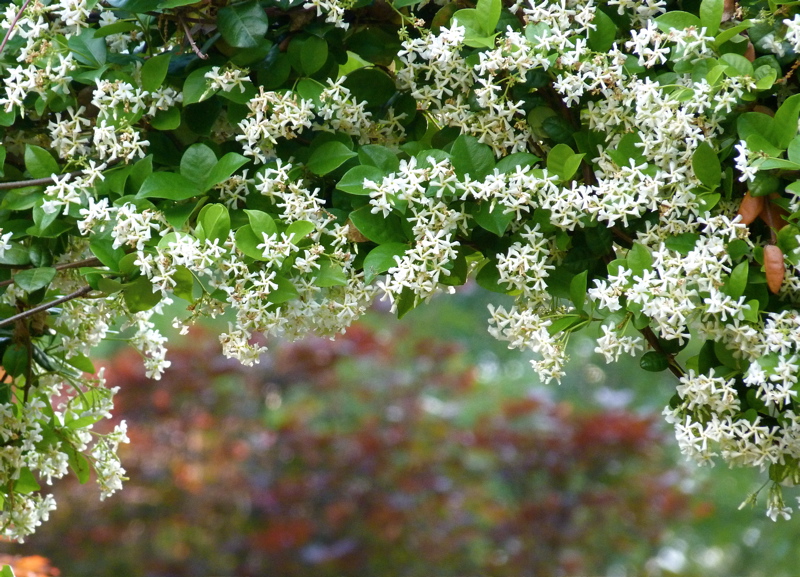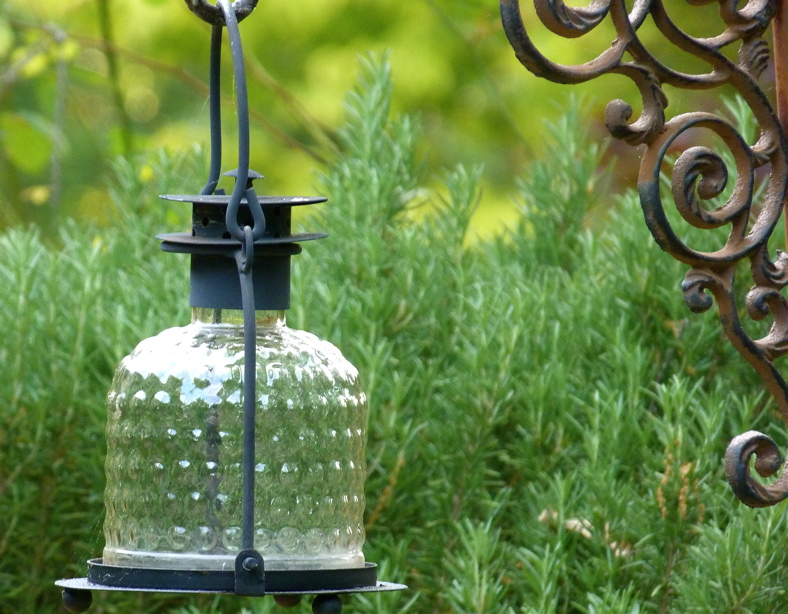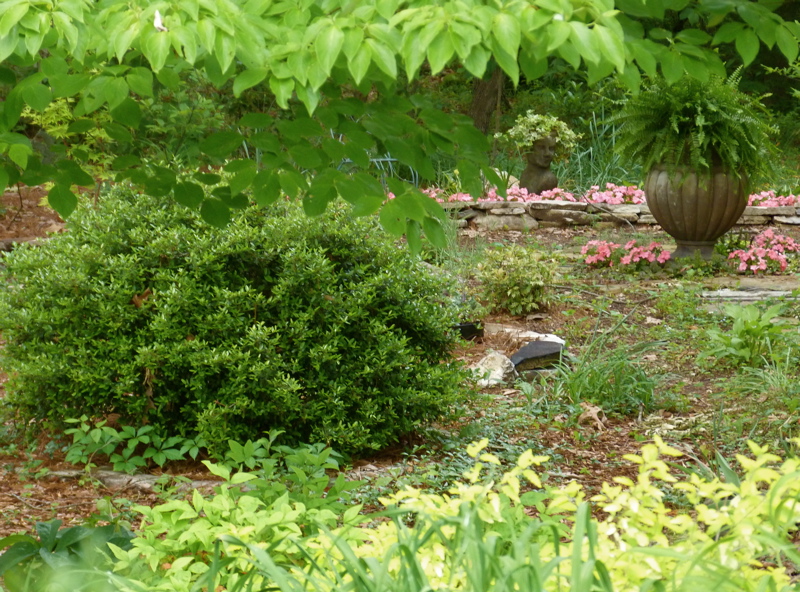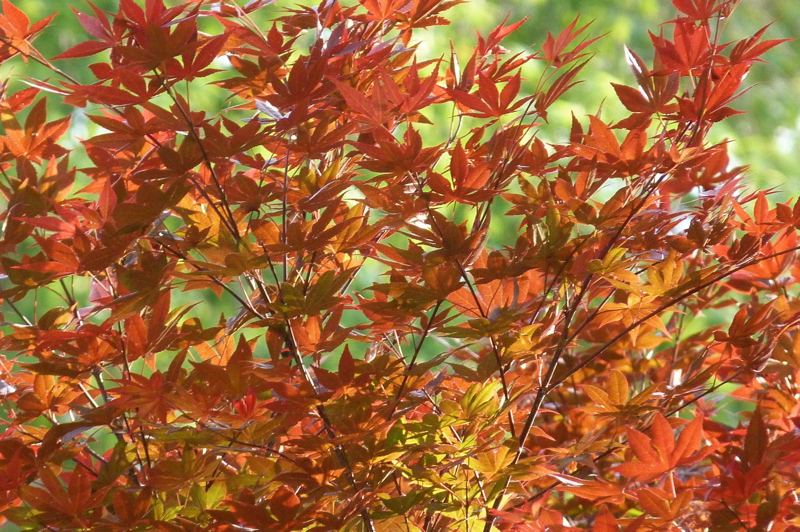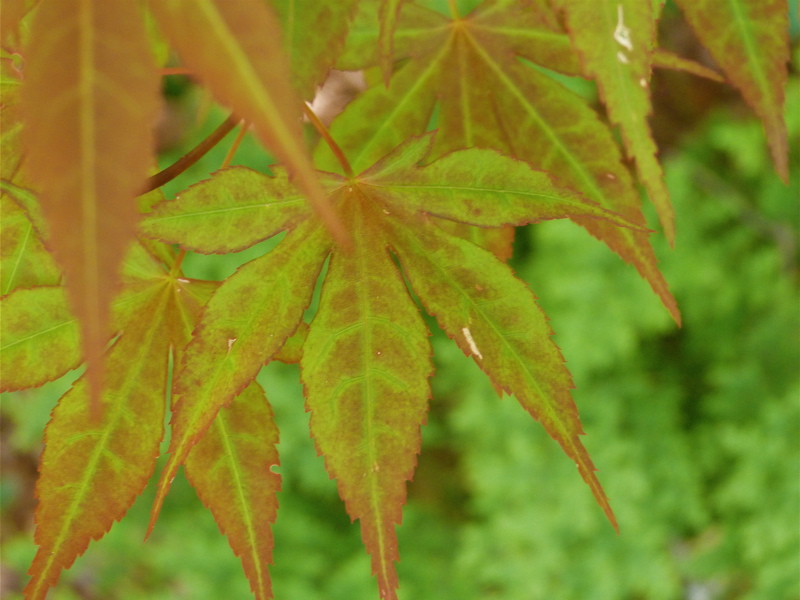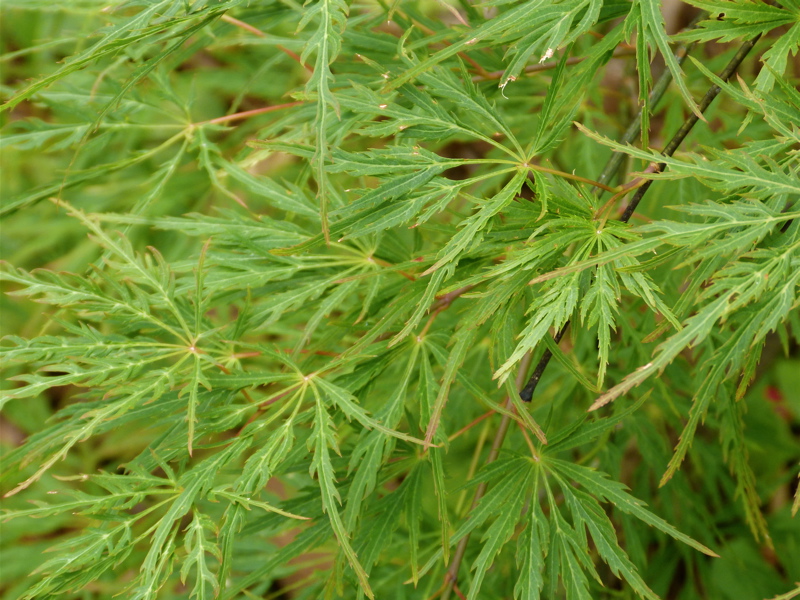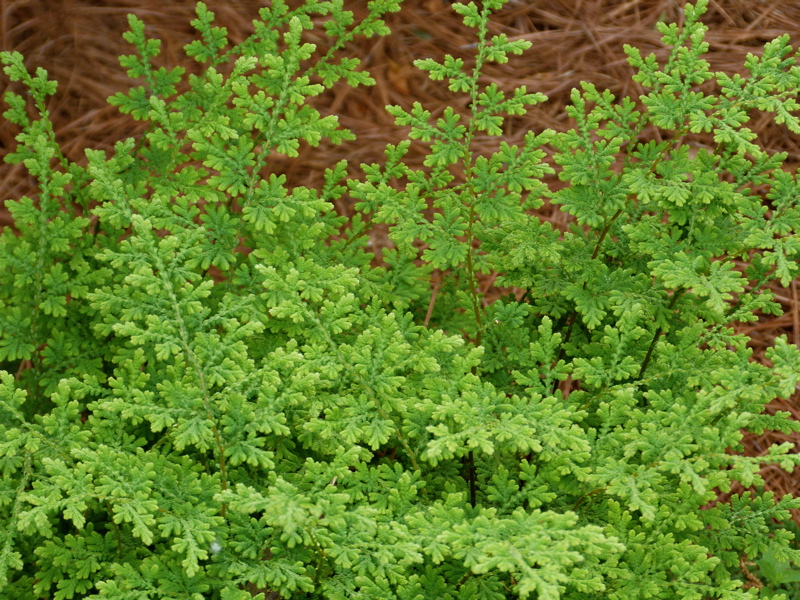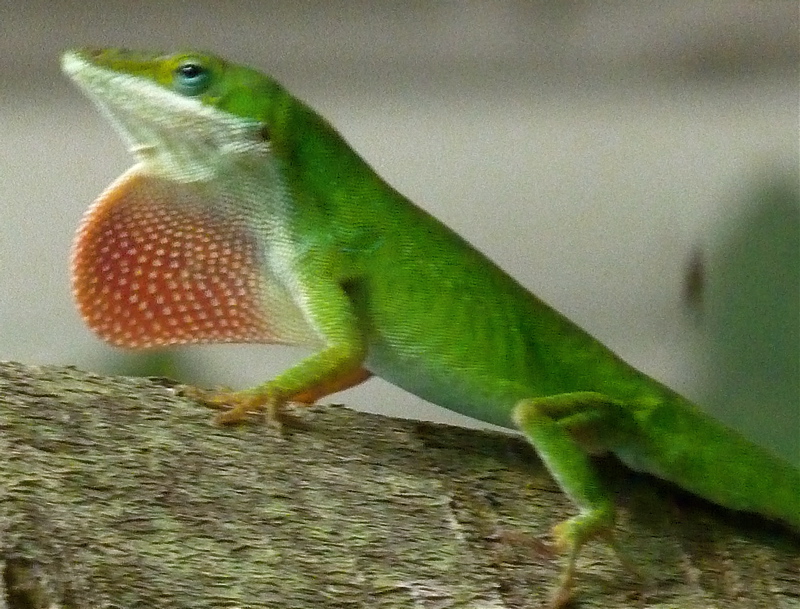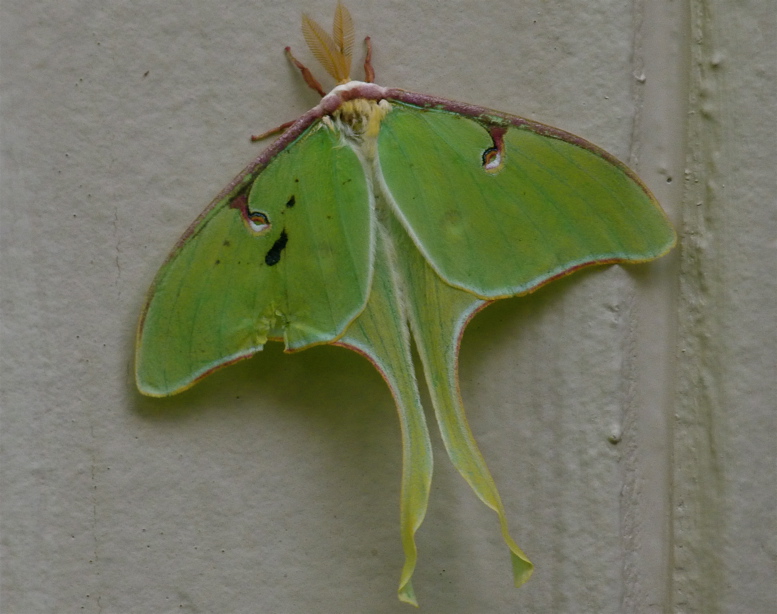Penstemon 'Husker Red'
 Monday, May 9, 2011 at 5:00AM
Monday, May 9, 2011 at 5:00AM Last year I planted Penstemon digitalis 'Husker Red' for the first time. The plant took the summer to establish itself, and while I enjoyed the distinctive maroon tinted foliage, there were no blooms. This year the airy white flowers, with a hint of pink, have proven to be worth the wait.
Penstemon, also called 'Beardtongue', has five stamens. Four are fertile. A fifth, enlarged one is sterile and quite hairy, as seen below, and gives the plant its common name.
I put Penstemon 'Husker Red' in the herb bed, and it is blooming now, along with purple salvia, chives, and knockout roses.
The flowers attract bees, butterflies, and hummingbirds. One can remove spent blossoms to encourage re-blooming, but one should let some flowers go to seed to feed the songbirds. The sturdy upright stems grow about two to three feet tall. Taller types of penstemon may need support. So far mine are not floppy at all, and I have not needed to stake them.
Native to many parts of North America, there are varieties of penstemon growing in hardiness zones 3-9. Most are evergreen to semi-evergreen, especially in milder climates. Although some penstemons will tolerate light shade, most prefer full sun, and foliage color and bloom production will be best with at least eight hours of sun per day. Penstemon likes well drained, neutral, even poor soil. It needs no more than a single application of organic fertilizer once a year, and mulching should be minimized to discourage crown rot. It is draught tolerant and pest and deer resistant. Nor is it prone to diseases, though it may experience root rot in consistently wet soil and may suffer from mildew in extremely humid, crowded conditions. The herb bed is raised about a foot and is filled with better draining soil than my native clay. 'Husker Red' is said to be a good penstemon for moist soil and humid conditions. Time will tell how it holds up to my steamy summers, but so far it is doing well.
Penstemon is best propagated by division or cuttings. I am already thinking of new places to plant this great, low-care perennial.
 Permalink
Permalink  native plants,
native plants,  penstemon 'Husker Red',
penstemon 'Husker Red',  perennials in
perennials in  native plants,
native plants,  perennials
perennials 

